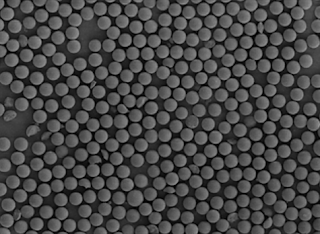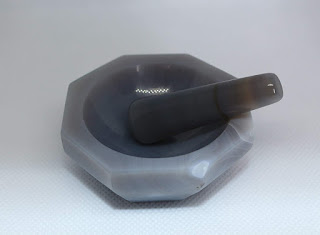In
the vast nanotechnology landscape, the focus is often on particles that are
tiny but have a big impact.
Size Consistency: Non-functionalized polystyrene
microparticles have precise and uniform sizes, which are critical for
consistent behavior in various applications.
Chemical Stability: The inherent stability of polystyrene
makes these microparticles resistant to chemical changes, ensuring reliability
under experimental conditions.
Surface inert: Non-functionalized or carboxyl
polystyrene microparticles have an inert surface, making them versatile for
a variety of applications without unwanted interactions.
 |
| Non-functionalized Or Carboxyl Polystyrene Microparticles |
Biological Research: These microparticles are often used as
model systems in biological research to simulate cell behavior and aid in the
development of diagnostic tests. Flow cytometry standards: Carboxyl or
non-functionalized polystyrene microparticles serve as standards in flow
cytometry and provide a reference for
calibration and validation of flow cytometers.
Colloidal Studies: Researchers use these microparticles
to study colloidal behavior and gain insights into the basic principles of
particle interactions in different environments.
Incorporation
of magnetic components into silica nanoparticles results in a magnetic response
that enables manipulation and targeting in applications such as drug delivery.
Surface functionalization: Carboxyl groups on the surface of
these nanoparticles enable easy modification with biomolecules, facilitating
targeted drug delivery and imaging applications.
Biocompatibility: Magnetic silica nanoparticles are
generally biocompatible and are therefore suitable for use in biological and
medical applications. Drug delivery: Carboxyl-functionalized magnetic silica nanoparticles are used in drug delivery systems and enable the targeted
delivery of therapeutic agents to specific cells or tissues.
Magnetic Resonance Imaging (MRI): These nanoparticles are used as
contrast agents in MRI to improve imaging capabilities and provide detailed
information about specific biological structures.
Environmental Remediation: Magnetic silica nanoparticles are used
in environmental remediation and help remove pollutants from water and soil
through magnetic separation processes.
Synergistic
Applications:
Combination of Strengths: Non-functionalized polystyrene microparticles and carboxyl-functionalized magnetic silica nanoparticles
offer a powerful combination that meets a wide range of research and
application requirements.
Versatile Toolkit: Researchers can leverage the
versatility of these nanoparticles to create a toolkit that includes colloidal
studies, biomimicry, drug delivery, and diagnostic applications.



